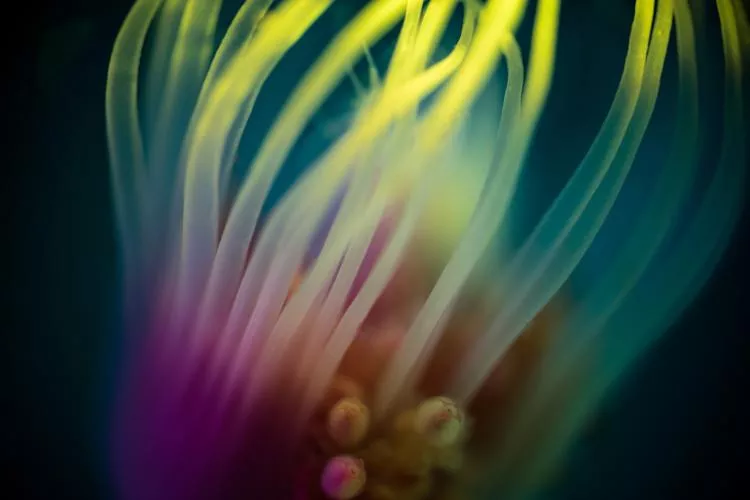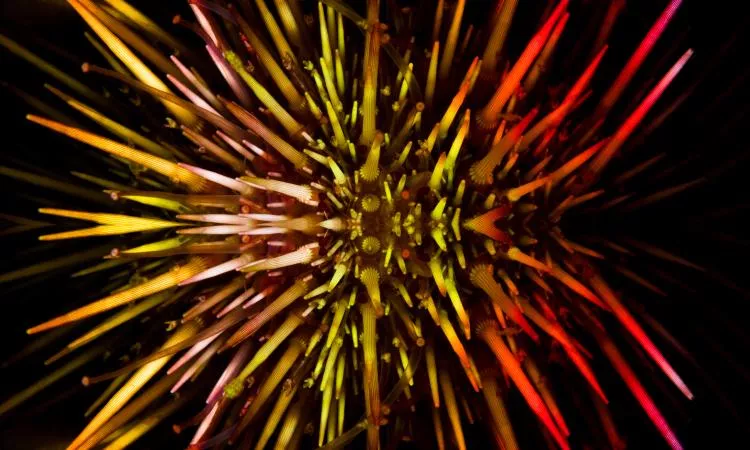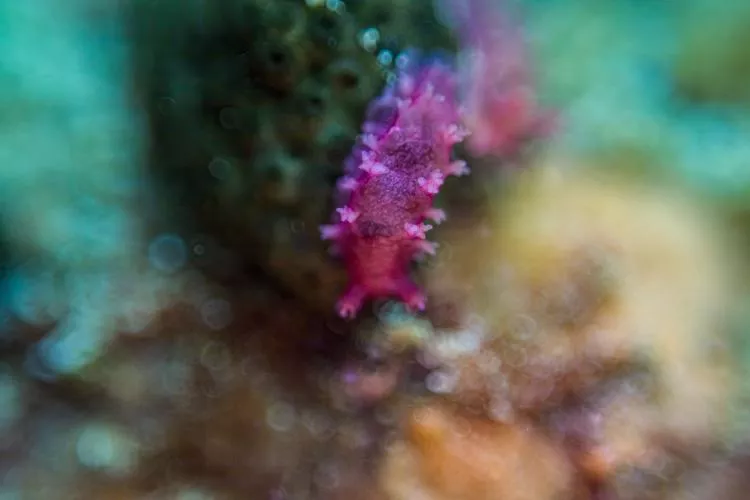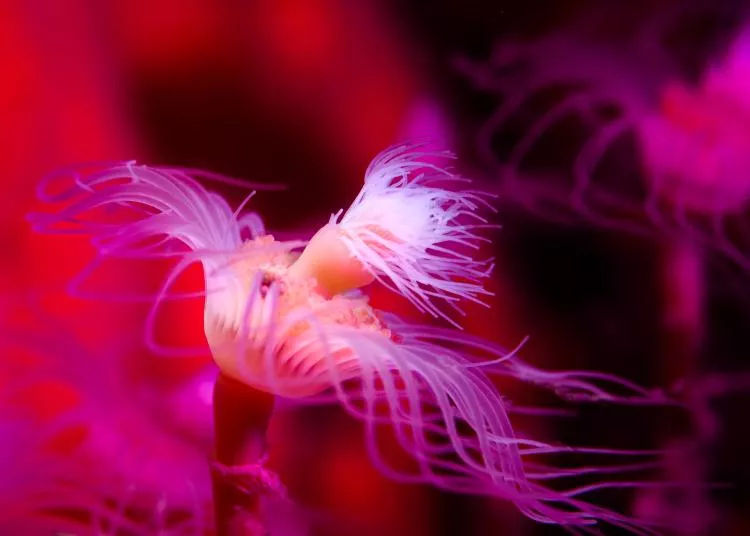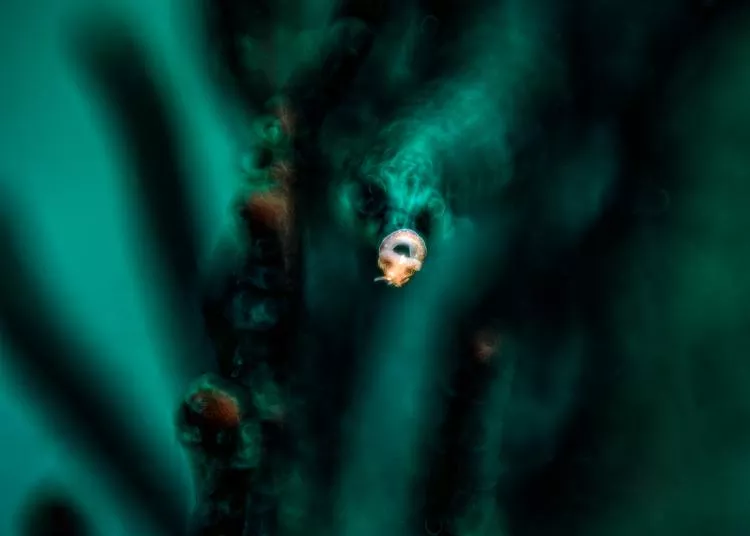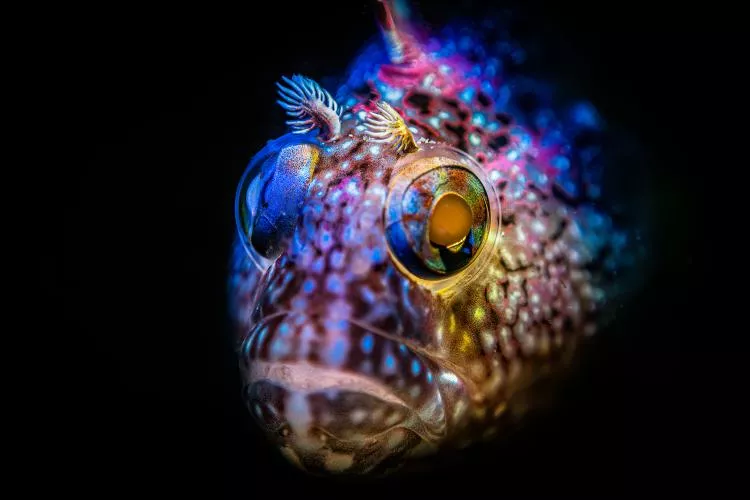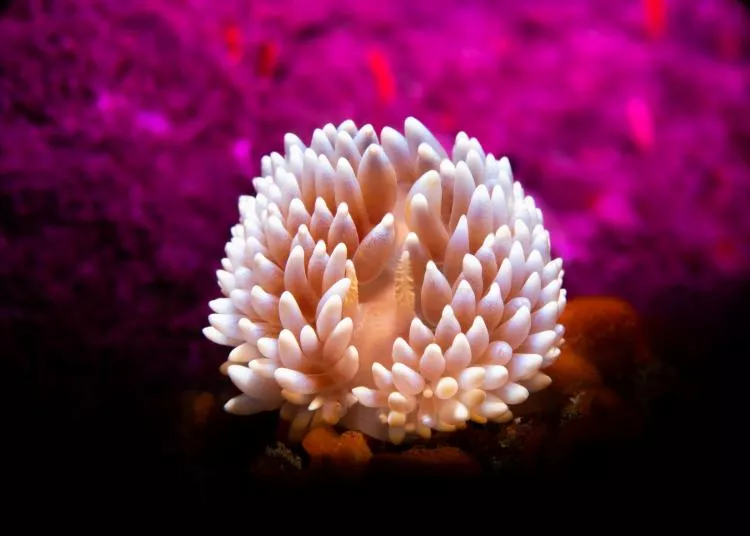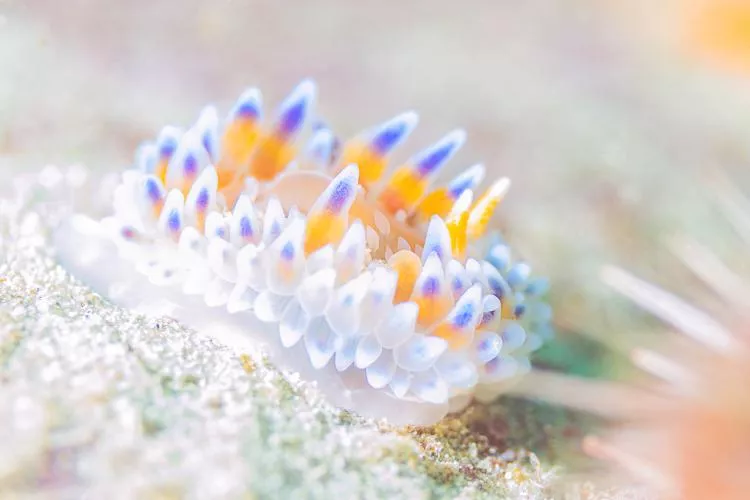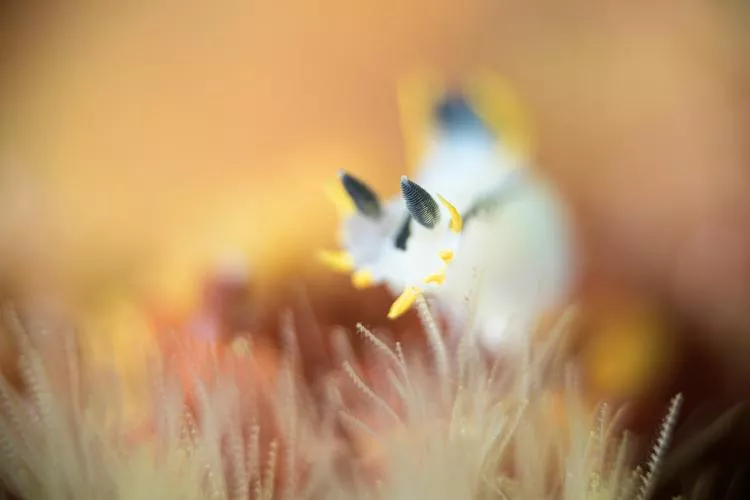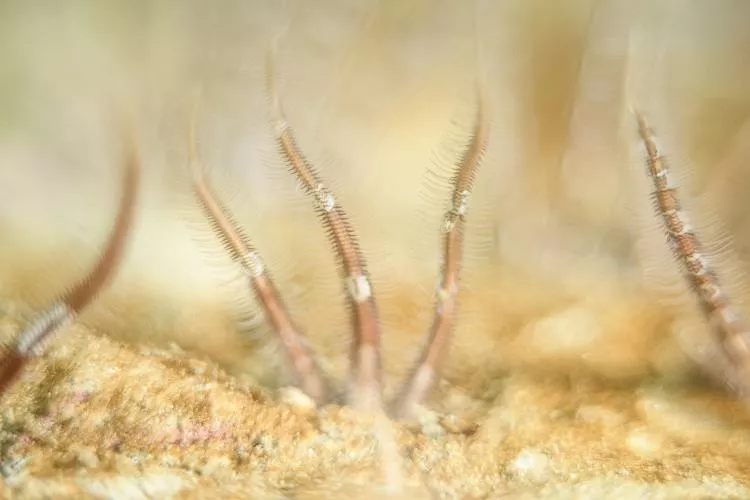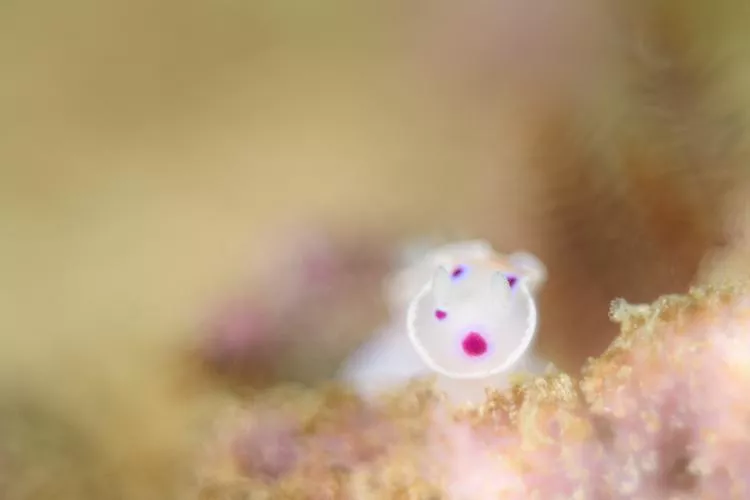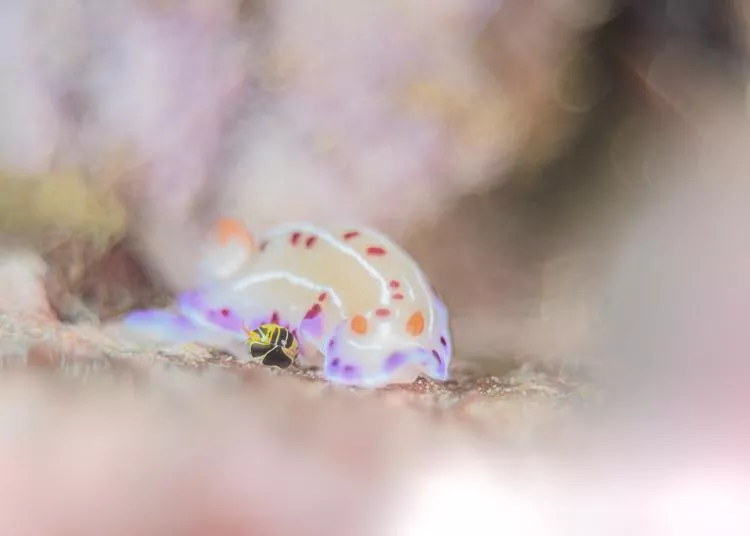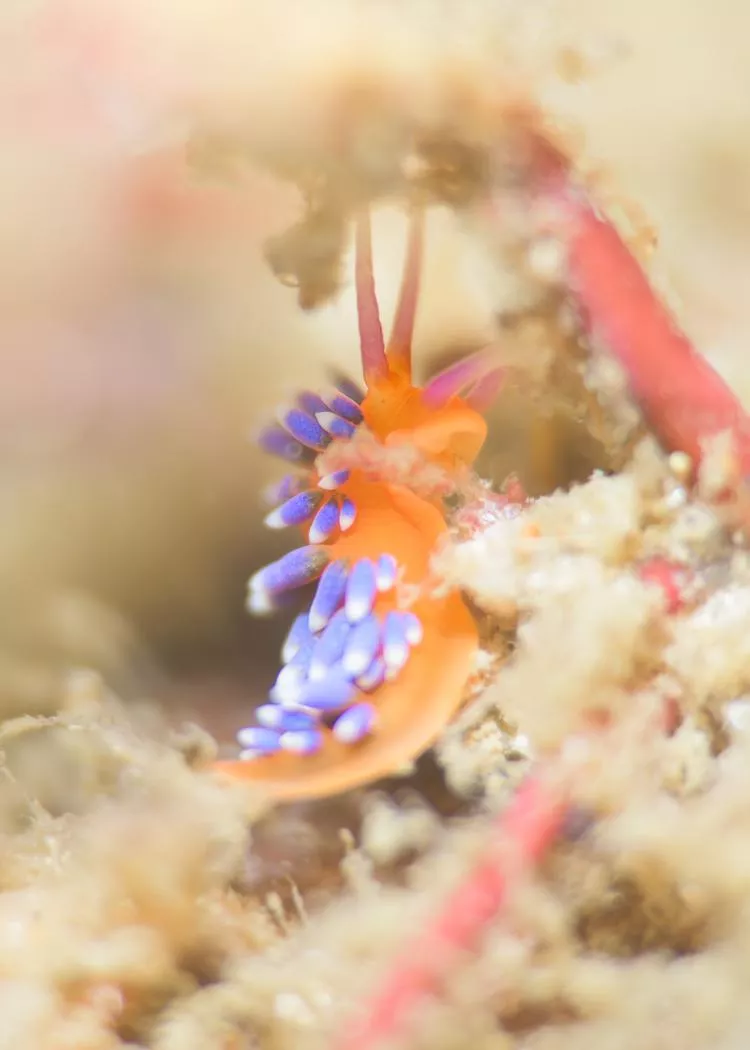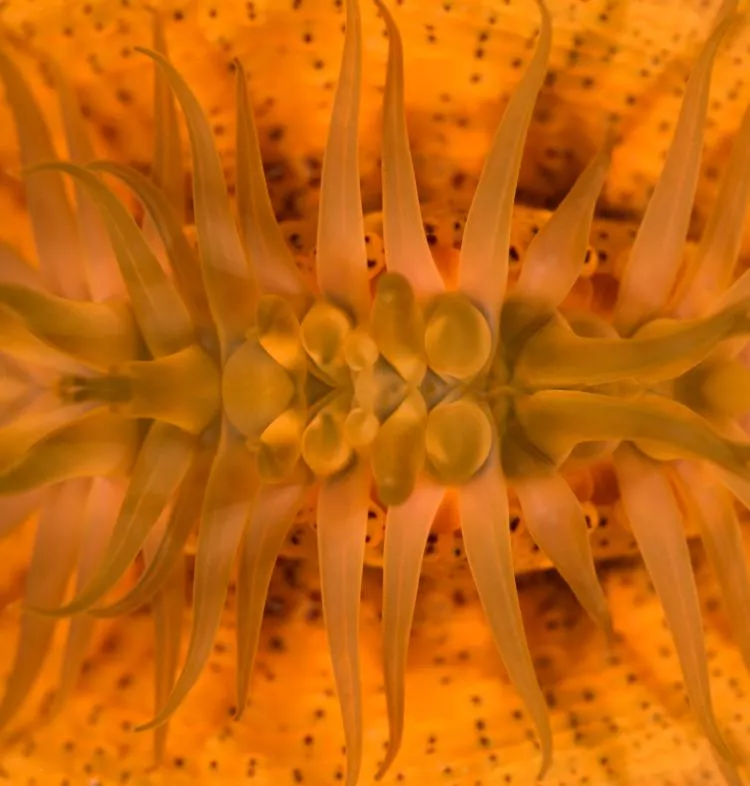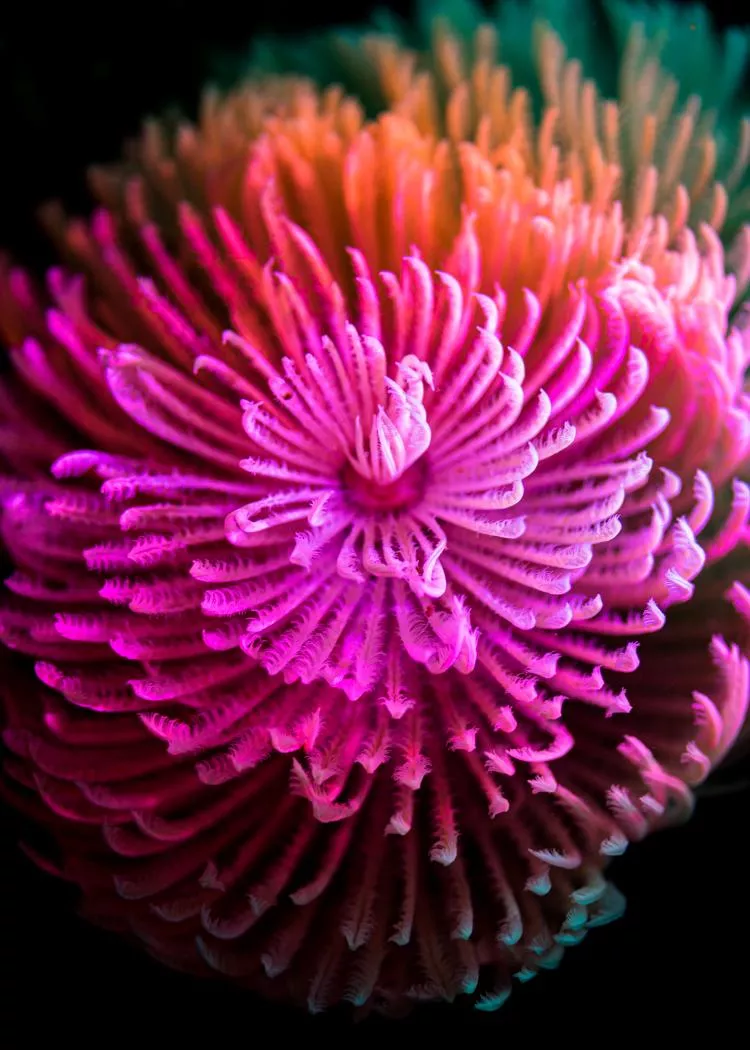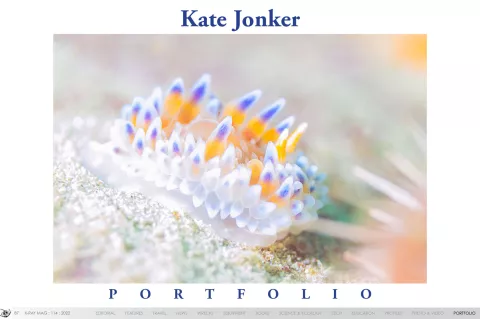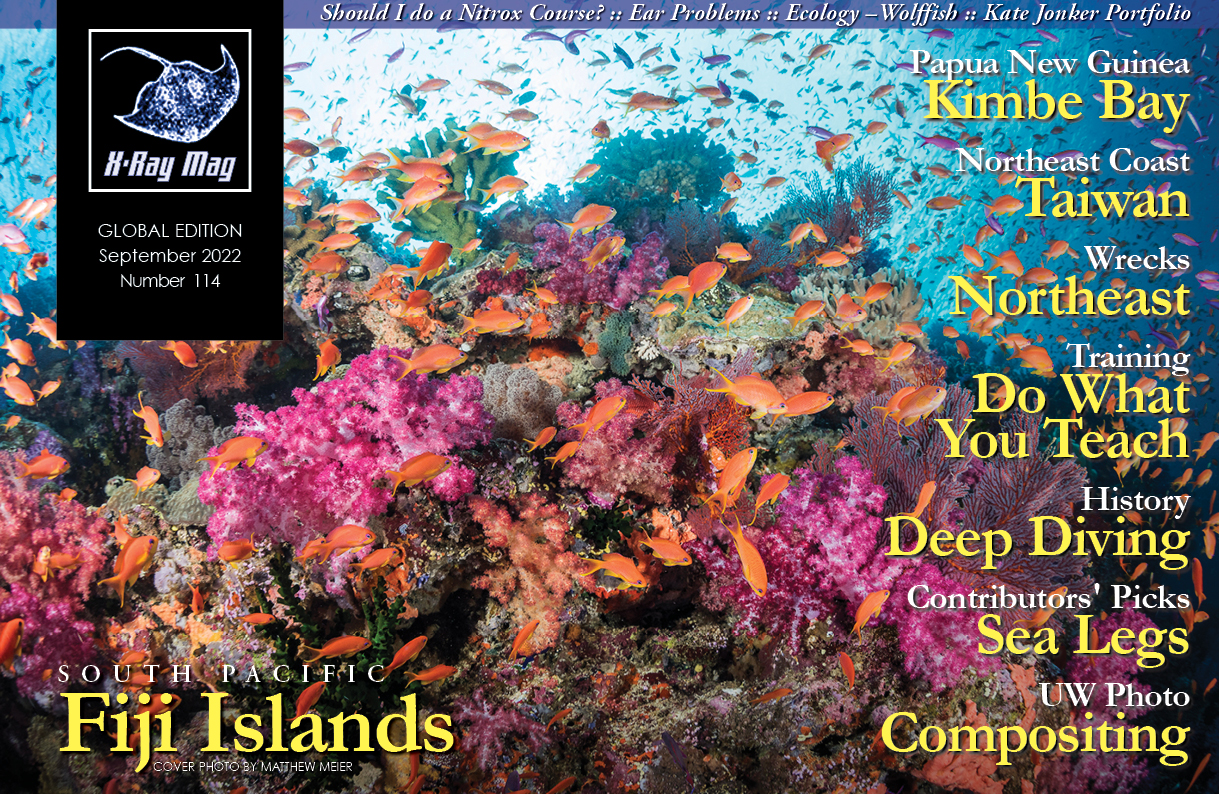Kate Jonker is an award-winning underwater photographer and coach, internationally published writer and public speaker, dive boat captain and dive guide based in South Africa. Pushing the boundaries of underwater photography, she creates sublime art photos like paintings, featuring the unique and diverse marine life found not just in the local waters around Cape Town, but also exotic locations around the world, from Southeast Asia to the Red Sea, among others.
Contributed by
X-Ray Mag interviewed the artist to find out more about her creative process, unique photographic style and perspectives.
X-RAY MAG: Tell us about yourself and how you became an underwater photographer.
KJ: I grew up on the beach in South Africa and spent as much time as I could snorkelling. I was fascinated by the life beneath the waves. I was given my first camera when I was nine and developed a love for photographing the details and textures in nature. Although I learnt to scuba dive 22 years ago, my love of the ocean and photography only came together 10 years later when my husband and I opened a scuba diving business in our hometown of Gordon’s Bay just outside Cape Town. I wanted to capture the beauty of our marine life to encourage others to learn to dive and to come diving with us.
X-RAY MAG: With your art photo series, you have moved past mainstream underwater photography and into the realm of fine art. From where did you get your inspiration for the art series? Was it something you sought out? Did it arise out of creative experimentation, or was it something that happened to you in the course of life—encounters with other people or things you studied or read?
KJ: My grandfather was an artist. He was always painting. I must have inherited his genes as creativity was part of life growing up. I loved the work of Impressionist artists such as Claude Monet and Post-Impressionist artists such as Vincent van Gogh and the surrealist work of Salvador Dali.
Quite early on in my underwater photography journey, I started to experiment with different techniques such as snooting and shallow depth of field as I found “just taking photos” boring. However, a chance encounter with underwater photographer Patrick Ong on a trip to Anilao in the Philippines in 2017 was the catalyst for my creativity. Patrick introduced me to reverse ring macro photography and the use of coloured lights.
I love how reverse ring macro photography creates painterly, distorted images with incredibly shallow depths of field, and how the use of torches and strobes with coloured filters adds another dimension. It is a challenge, and the results are never boring!
X-RAY MAG: What is the message or experience you want viewers of your art photos to have or understand?
KJ: I want viewers to see the beauty of our underwater world expressed in a unique way, to attract their attention and capture their imagination.
X-RAY MAG: How do people respond to your art photos?
KJ: Admittedly, my art is not everyone’s “cup of tea.” However, the most memorable interaction was when famous underwater photographer Dr Alex Mustard MBE commented on one of my photos, saying, “This is a really nice use of coloured light. Ninety-nine percent of them are horrible, and this one works really well.”
X-RAY MAG: What is your creative process? What special equipment and postproduction tools do you use?
KJ: Before setting up my camera, I decide what type of images I am going to make, usually the night before I go diving. This will determine which lens I am going to use and the type of lighting I will need. For example, I have an old Meyer-Optik lens from the 1960s that creates an interesting bubble bokeh. As it is a manual lens, I need to decide on the aperture and working distance before I put the camera in the housing. Or, if I want to photograph sharper, more detailed images using a snoot and colour filters, I will set up my camera with either a 60mm or 105mm macro lens.
It is a lot of planning beforehand. My mindset will then be completely focused on the type of image I want to create throughout my dives. Whilst I am diving, I look for suitable subjects for the type of image I am after.
I do not create the image in postproduction at all, I just use Lightroom for postproduction and will adjust exposure, highlights, shadows, whites and blacks, and add texture and clarity if necessary, or a little vibrancy if the colour is looking a bit flat. I will use the spot removal tool to remove any backscatter. That is about it.
X-RAY MAG: In your relationship with reefs and the sea, where have you had your favourite experiences?
KJ: My favourite ocean experiences have taken place in my hometown of Gordon’s Bay. One summer, I made friends with a little yellow speckled klipfish who lived in a broken clump of bryozoans at the Stone Dog dive site. The first thing I used to do when I jumped in the water there was to swim over and see if he was home. At first, he was quite shy, but after a number of visits, he would pop out of his tiny home and pose beautifully for me whilst I took his photo. He really was extremely cute.
X-RAY MAG: Can art be defined? What is your definition or concept of what constitutes art?
KJ: I do not believe art can be defined. What is art to me, might not be art for you. Art is such a personal choice. For me, art is the visual creation of an image in my mind. I will think about the style of photograph I want to create long before I capture it with my camera, and when the opportunity arises, I will try my best to create that image.
X-RAY MAG: Can images be both documentary and artistic at the same time, or do we always have to make a choice?
KJ: Images can certainly be both documentary and artistic at the same time. It boils down to how much of the actual subject remains recognisable. Art is a blurring of lines between the actual image (the documentary) and the art (the imagination).
X-RAY MAG: Can underwater photography evolve further, do you think?
KJ: Underwater photography will continue to evolve as new technology continues to be developed. New equipment such as advanced snoots, creative underwater lighting, filters and lenses will also continue to be developed as new fads or trends come and go in underwater photography.
X-RAY MAG: What is the most interesting photography (or photographer’s work) you have seen lately?
KJ: I absolutely love the underwater photography technique that is loosely termed “Japanese Art.”
X-RAY MAG: What is this technique? What about it is so appealing to you?
KJ: “Japanese Art” is a style of photography I stumbled across by chance in 2018. I chatted with some of the photographers who excel in this style to find out more and was told: “Japanese Art is a part of Japanese culture. If one uses the rule of thirds, the subject is either placed on the bottom right or bottom left intersect of the frame. The subjects should be less than 1:1 ratio in the frame, and as a very shallow depth of field is used, the subject is very softly in focus. The result also creates a coloured background with soft, creamy colours shot in high key. The image features a large amount of light tones and fewer midtones or shadows. This is created through in-camera techniques and not postproduction.”
X-RAY MAG: I am particularly intrigued with the series of your art images that remind me of lovely delicate pastels on white cotton papers. How did you develop this series and what was your inspiration for creating them?
KJ: The inspiration for these photos was indeed the beautiful style of photography from Japanese underwater photographers known as “Japanese Art.” To create these images, I used a very shallow depth of field using wide open apertures, paired with a diopter. This creates these lovely soft pastel colours and a very shallow depth of field.
X-RAY MAG: A camera is just a mechanical tool. Art is an interpretation. How would you teach and train somebody to have an eye for creating interesting imagery? Is natural talent a prerequisite or can the right tutor and putting in the required effort take one all the way—to become a good, or even successful, artist?
KJ: Admittedly, some people are naturally more creative than others. However, the mere act of making a photograph is already creativity in itself. When we press that shutter, we are pressing it at the moment we feel is right. It is a personal choice. However, I do believe that more creative individuals will be able to produce work that is unique, whereas the less creative individuals are more likely to copy the style or image that they have seen, and make it their own.
X-RAY MAG: If you could use only three short sentences, what advice would you give to aspiring photographers—underwater or otherwise?
KJ: You do not need the most expensive camera to make beautiful images. Learn to use your camera inside and out to achieve the results you want. Do not be afraid to experiment.
X-RAY MAG: What are your upcoming projects, photo courses or events?
KJ: I have been teaching “in-person” underwater photography workshops for the past five years and am currently working on putting them online under my “Underwater Photo Coach” brand so that I can help even more people make beautiful underwater images.
X-RAY MAG: How can viewers order prints of your work for their homes, offices or resorts? Do you have signed limited edition prints on archival papers?
KJ: Anyone wishing to order my prints can contact me directly. I can then arrange their chosen image to be printed on a selection of mediums by a top printer and delivered to their address. I limit the number of prints per image to a maximum of five and sign the print if requested.
X-RAY MAG: Lastly, is there anything else you would like to tell our readers about yourself and your artwork?
KJ: I would like to end on a note of encouragement for all underwater photographers. Photography is an opportunity to be creative. Do not worry about what anyone else will say. Art is so subjective. Do what feels right to you, create images that you like and enjoy making them. Not everyone likes a Dali. Not everyone likes the work of Vincent van Gogh. Create art for your own enjoyment, and if your work captures the imagination and brings happiness to others, that is an extra bonus!
For more information and to order prints, please visit the artist’s website at: katejonker.com.

